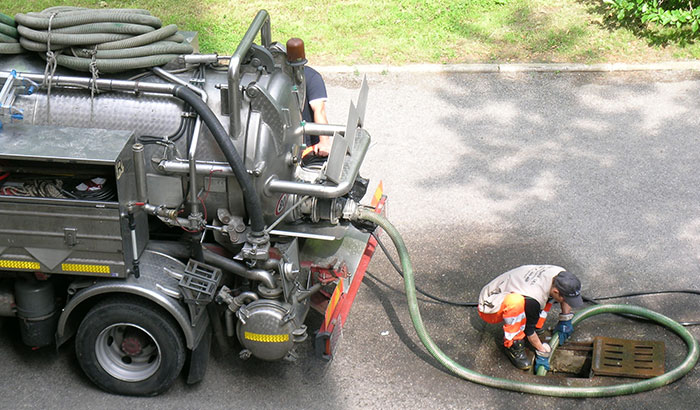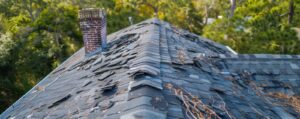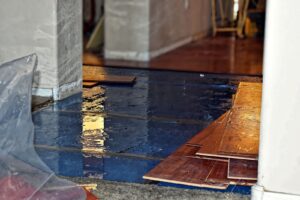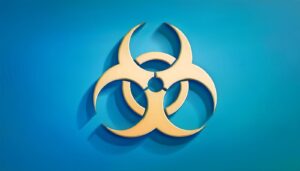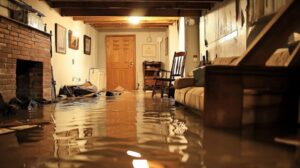If there’s a situation that no homeowner ever wants to be a part of, it’s sewage damage.
The very thought of dealing with the aftermath of a sewage backup or pipe leak can send shivers down your spine. It’s a distressing experience that can leave you feeling overwhelmed, frustrated, and even a bit helpless. But don’t worry; you’re not alone in this painful journey.
The mere thought of contaminated water flooding your home is enough to evoke a deep sense of unease. It’s a situation that demands immediate attention, but it’s crucial to approach it with a level head and a well-informed plan.
This blog aims to be your guiding light through the murky waters of sewage damage. We understand the emotional toll it takes on you and your loved ones. We’ve witnessed the devastation it can cause, and we’ve seen firsthand the relief that comes with seeking out professional sewage cleanup services.
In the sections to come, we’ll delve into the intricacies of sewage damage, equipping you with the information you need to face this situation head-on. Remember, you’re not in this alone.
While the emotional toll can be overwhelming, take solace in knowing that there are experts who specialize in sewage damage restoration and compassionate professionals ready to support you.
What Causes a Sewer Backup?
Understanding the causes behind sewer backups is crucial in preventing such incidents and taking appropriate measures. Let’s explore some common culprits that can lead to a sewer backup:
- Clogged or Blocked Pipes: One of the primary causes of sewer backups is the accumulation of debris, grease, and other substances in the pipes. Over time, these materials can create blockages that restrict or completely obstruct the flow of wastewater. Tree roots can also infiltrate and damage sewer lines, exacerbating the issue.
- Heavy Rainfall and Flooding: During periods of intense rainfall or flooding, the volume of water entering the sewer system can exceed its capacity to handle the load. As a result, sewage can back up into homes and basements, causing significant damage. Municipal sewer systems can become overwhelmed, leading to widespread backups in affected areas.
- Aging Infrastructure: In older neighborhoods, the sewer infrastructure may be outdated and susceptible to issues. Over time, pipes can deteriorate, crack, or collapse, impeding the proper flow of sewage. Additionally, outdated systems may not have sufficient capacity to handle the demands of modern households, increasing the risk of backups.
- Improper Disposal of Materials: Flushing items down the toilet or pouring substances down drains that shouldn’t be disposed of in this manner can contribute to sewer backups. Examples include paper towels, feminine hygiene products, diapers, cooking grease, and excessive toilet paper. These items can accumulate in the pipes, causing obstructions.
- Sewer System Malfunctions: In some cases, malfunctions within the sewer system itself can lead to backups. Issues with pump stations, mechanical failures, or maintenance oversights can disrupt the normal flow of sewage, causing it to back up into homes.
Regular maintenance, such as professional pipe cleaning and inspections, can help identify and address potential issues before they escalate. Additionally, practicing proper waste disposal habits and being mindful of the sewer system’s capacity during heavy rainfall can significantly reduce the risk of backups.
Immediate Steps to Take after a Sewer Backup
While it’s nice to know what can cause backups, you probably aren’t worrying about the cause in the middle of a backup; you want to know what you need to do to minimize the damage.
Taking immediate action is crucial to mitigate further damage and ensure the safety of your family and property. Here are some critical steps to take right after a sewer backup:
- Prioritize Personal Safety: The first and foremost concern is your safety. Sewage contains harmful bacteria, viruses, and other pathogens that can pose serious health risks. Before entering the affected area, put on protective gear, such as rubber gloves, boots, and a mask. If the backup is extensive or the smell is overpowering, it may be safer to evacuate until professional help arrives.
- Turn Off the Water Supply: If it is safe to do so, locate and turn off the main water supply to your home. This step will prevent additional water from entering the plumbing system. Turning off the water supply can help contain the damage and allow for a more focused cleanup and restoration process.
- Evacuate the Affected Area: If the sewer backup has affected a large area or poses a significant risk, it is advisable to evacuate that space until professionals can assess and address the situation. This precautionary measure helps protect your health and minimizes potential exposure to hazardous contaminants.
- Avoid Further Water Usage: Until the sewage backup is resolved, refrain from using sinks, toilets, showers, or any other plumbing fixtures connected to the affected area. Continuing to use water can worsen the backup and increase the risk of water damage to your property.
Contacting Professional Sewage Cleanup Services
Once you and your family are safe, the very next step is to contact professional sewage cleanup services.
When faced with a sewage backup, it’s crucial to contact professional sewage cleanup services as soon as possible. These professionals possess the necessary expertise to handle the intricacies of sewage damage restoration.
They understand the complexities involved, from assessing the extent of the damage to identifying potential health risks. By relying on their knowledge and experience, you can trust that the sewer backup cleanup process will be conducted efficiently and effectively, adhering to safety regulations.
Professionals are equipped with industrial-grade pumps, extraction tools, disinfectants, and drying equipment that are not typically available to homeowners. With these resources at their disposal, they can swiftly remove standing water, extract sewage, sanitize affected areas, and expedite the restoration process.
Another key advantage of professional sewage cleanup services is their ability to prevent secondary damage. Time is of the essence when it comes to mitigating risks such as mold growth and structural deterioration. These experts act swiftly to remove moisture, implement specialized drying techniques, and employ preventative measures to inhibit mold growth.
Addressing these potential complications early on saves you from future headaches and expenses.
Documenting the Damage
Throughout the whole process, you should make sure that the damages are clearly and properly documented.
While it may be the last thing on your mind amidst the chaos, thorough documentation serves several important purposes, particularly when it comes to insurance claims and ensuring proper restoration.
When it comes to insurance purposes, documentation plays a significant role in filing a claim. Insurance companies typically require evidence of the damage to assess the extent of coverage needed. By documenting the damage comprehensively, you provide a clear record that supports your claim and helps establish the necessary reimbursement for restoration expenses.
Remember, the more thorough and detailed your documentation is, the stronger your case will be when dealing with insurance providers.
Documenting the damage also assists in prioritizing restoration efforts. It allows you to identify the areas and items that require immediate attention, ensuring that the most critical aspects of the sewer backup cleanup and restoration process are addressed promptly.
By having a visual record of the damage, you can communicate effectively with the professional restoration team, providing them with a clear understanding of the scope of work required.
Remember to document both the visible damage and any affected personal belongings or valuable items. Create a detailed inventory of damaged items, including their descriptions, estimated values, and any supporting documentation like purchase receipts or appraisals. This inventory will be crucial when assessing the loss for insurance purposes and seeking potential reimbursement.
The Cleaning and Restoration Process
The cleaning and restoration process following a sewage backup involves a series of crucial steps to ensure the thorough cleanup, sanitization, and restoration of your property. While each situation may vary, here is a list outlining the typical steps involved in the cleaning and restoration process:
- Initial Assessment: Professional restoration experts assess the extent of the sewage damage and develop a tailored restoration plan. They identify safety hazards, evaluate structural integrity, and determine the scope of the sewer backup cleanup and restoration required.
- Extraction and Removal: Standing water and sewage are extracted using specialized pumps and extraction equipment. Technicians remove debris, contaminated materials, and unsalvageable items to prepare the area for thorough cleaning.
- Sanitization an Disinfection: The affected areas undergo a meticulous sanitization process using EPA-approved disinfectants to eliminate bacteria, viruses, and pathogens. All surfaces, including walls, floors, and fixtures, are thoroughly cleaned and sanitized to ensure a safe and hygienic environment.
- Drying and Dehumidification: Industrial-grade drying equipment, such as dehumidifiers and air movers, are strategically placed to remove excess moisture from water-damaged wood and other surfaces and promote proper drying. This step helps prevent mold growth, structural damage, and the development of other secondary issues.
- Odor Removal: Specialized techniques are employed to eliminate unpleasant odors from water-damaged wood and other materials. Air scrubbers and deodorizing agents are used to further improve air quality and remove lingering odors.
- Structural Repairs and Restoration: Damaged structural components, such as drywall, water-damaged wood floors, or insulation, are repaired or replaced as needed. Carpentry, painting, and other finishing work are performed to restore the affected areas to their pre-damage condition.
- Item Cleaning and Restoration: Salvageable personal belongings are meticulously cleaned, decontaminated, and restored.
- Ongoing Monitoring and Documentation: Throughout the process, professionals monitor the progress of the cleanup and restoration efforts. Documentation continues, with additional photographs, notes, and records created to track the restoration journey.
- Final Inspection and Quality Assurance: Once the restoration is complete, a final inspection is conducted to ensure all areas have been appropriately restored and meet safety and quality standards. The restoration team may provide you with a certificate or report documenting the work performed and confirming the satisfactory completion of the restoration process.
The cleaning and restoration process will vary depending on the specific circumstances of the sewage backup and the recommendations of the restoration professionals. It’s always advisable to consult with a certified restoration company to assess and address your unique situation appropriately.
Dealing with Insurance
When faced with the aftermath of a sewage backup, one important aspect to consider is dealing with your insurance company. Navigating the insurance process can help you recover the costs associated with the cleanup and restoration of your property. Here are some key steps to guide you through this process:
- Contact Your Insurance Provider: As soon as possible, contact your insurance company to report the sewage backup incident. Promptly notifying them allows them to initiate the claims process and provide you with instructions on the following steps to take. Provide a clear and detailed account of what happened, including the backup’s date, time, and cause.
- Review Your Insurance Policy: Take the time to thoroughly review your insurance policy to understand the coverage for sewage backup and water damage. Pay close attention to the terms, limits, and exclusions mentioned in the policy. This understanding will help you navigate the claims process more effectively and manage your expectations regarding the coverage you may be eligible for.
- Document the Damage: As we mentioned above, it’s crucial to document the extent of the damage thoroughly. Take photographs or videos of the affected areas, including any damaged personal belongings or furniture.
Keep a detailed inventory of the damaged items, noting their descriptions, approximate values, and any supporting documentation such as receipts or appraisals. This documentation will serve as evidence to support your claim and can help facilitate the claims process.
- File a Claim: Follow the instructions provided by your insurance company to file a claim. Be prepared to provide all necessary information, including the details of the incident, documentation of the damage, and any supporting evidence. Fill out the required forms accurately and submit them within the designated timeframe specified by your insurance company.
- Cooperate with the Claims Adjuster: Your insurance company may assign a claims adjuster to assess the damage and determine the extent of coverage. Cooperate with the adjuster, provide them access to your property for inspection, and answer any questions they may have regarding the incident and the damages.
Keep records of all communication with the adjuster, including their contact information and any agreements or decisions made.
- Document Expenses: Throughout the cleanup and restoration process, keep track of all expenses incurred, including invoices, receipts, and invoices from professional cleanup services, restoration companies, and any other related costs. These documents will be crucial in supporting your claim for reimbursement.
- Seek Professional Advice if Needed: If you encounter challenges or complexities during the claims process, consider seeking guidance from a public adjuster or an attorney experienced in insurance claims. They can provide expert advice and help ensure you receive a fair and equitable settlement.
Remember to remain patient and persistent throughout the insurance claims process. Keep copies of all documentation and communication related to your claim.
By following these steps and working closely with your insurance company, you can navigate the process more effectively and increase your chances of receiving the appropriate coverage for sewage backup damages.
Tips for Preventing Future Sewer Problems
Avoid future sewer problems and maintain the integrity of your sewer system by taking several important measures.
Regular maintenance is key to identifying and addressing any issues before they escalate. Schedule periodic inspections with a professional plumber who can assess the condition of your pipes, identify potential problems, and recommend necessary repairs or cleaning. By proactively maintaining your sewer system, you can prevent future clogs and backups.
Proper disposal practices also play a significant role in preventing sewer problems. Be mindful of what you flush down the toilet or drain. Non-biodegradable items, grease, oils, paper towels, sanitary products, and chemicals should never be disposed of in the sewer system.
These materials can cause blockages and put unnecessary strain on your pipes. Dispose of them appropriately in the trash or according to local regulations.
Consider installing backwater valves in your plumbing system (if your home doesn’t have one already. Most homes built after 1988 do). Backwater valves allow wastewater to flow out but prevent it from flowing back into your property during heavy rains or sewage system overflows. These valves provide an extra layer of protection against potential backups and can help safeguard your property from sewer-related damage.
Tree roots are another common cause of sewer problems. Tree roots can infiltrate sewer lines and lead to blockages and pipe damage. To prevent such issues, it is crucial to avoid planting trees near sewer lines, as the proximity of tree roots to underground pipes increases the likelihood of root intrusion and subsequent sewer problems.
Regular inspections by a professional plumber are also instrumental in identifying and addressing tree root concerns before they cause significant damage.
If a plumber determines that tree roots or other factors have caused significant damage to your sewer pipes, they may recommend the installation of new pipes. This process typically involves excavating the affected area, removing the damaged pipes, and replacing them with new ones.
Installing new pipes not only resolves the immediate problem but also ensures the long-term functionality and reliability of your sewer system, providing you with peace of mind and preventing future issues related to damaged pipes.
Total Flood and Fire Restoration: Restoring Your Home and Peace of Mind After Sewage Damage
Don’t let the devastating impact of sewage damage continue to haunt your home. Take control of the situation and reach out to Total Flood and Fire Restoration for cleanup services that will restore your property and bring back a sense of normalcy to your life.
While sewage damage can leave you feeling overwhelmed and helpless, you don’t have to face it alone.
With Total Flood and Fire Restoration by your side, you can trust that we will handle every aspect of the cleanup process with utmost care and professionalism. Our experienced technicians are trained in the latest industry techniques and equipped with advanced tools to effectively remove the sewage, sanitize the affected areas, and restore your property to its pre-damage condition.
Take the first step towards reclaiming your home and peace of mind. Contact Total Flood and Fire Restoration now at 385-503-2572 or through our online form. Our dedicated team is available 24/7, ready to answer your questions and provide immediate assistance.
Don’t let sewage damage rob you of your sense of security and well-being. Trust Total Flood and Fire Restoration to quickly handle the cleanup with expertise, so you can focus on rebuilding, healing, and creating new memories in a restored home. Reach out to us today, and let us bring comfort back into your life.

